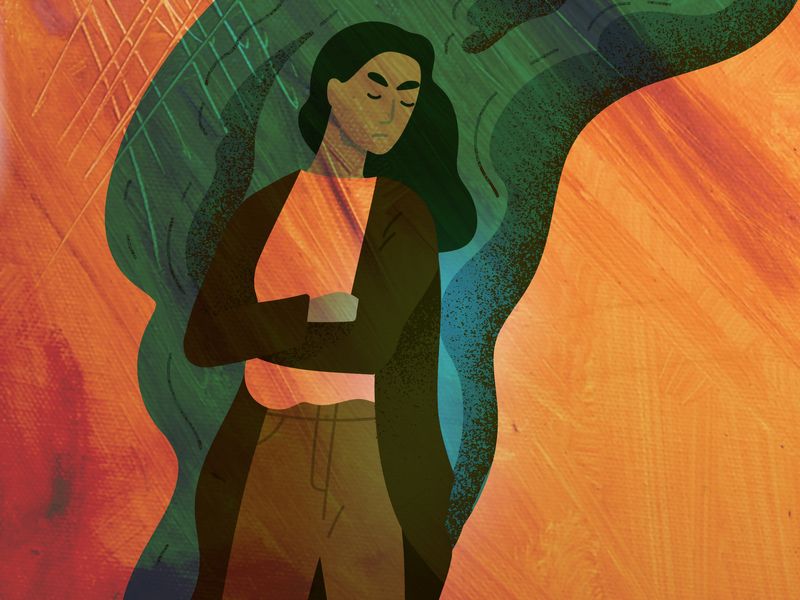
Age of innocence — if ever there was a misnomer today, it is this. In a heady mix of exposure, identity, and gender, a ‘woke’ generation is lapping up content that is predominantly dark and edgy, while it ‘finds’ itself.
Glance through shelves catering to young adults in a bookstore and themes like vampires, violence, and death are magnets, a popular genre described in an article in Wall Street Journal once as “so dark that kidnapping and brutal beatings are now just part of the run of things.”
Writers say reality bites, but children deserve to know everything — the warts, the ugliness, and the violations. Adolescence by itself is dark, they defend.
It is tough to argue with that, nor did reading Sir Arthur Conan Doyle bring in a boom in the local Sherlock Homes industry but course correction is never about swinging from one extreme to another which is what the content predominantly seems to be.
Themes that conventionally challenged may not have disappeared, but they are tucked away somewhere at the back of the shelves. Is this genre taking away from the depth of storyline itself?

There is an argument that with an increase in published books for young teens, the spread of dark themes seems omnipresent, but there was always a Heathcliff in a Wuthering Heights or a dark tragedy just around the corner in a Shakespeare play. Flaws are intrinsic to a story, yet something did change in the recent years.
Unhindered access to social media has transformed many equations, along with an exposure where angst and aggression off screen have been normalised, live streaming of suicides on these platforms are not unheard of.
While critics in favour of the dark themes argue that it spreads hope in kindred spirits, subjects like self-harm and rape can no longer just be dismissed as fictional. Nor is empathy a given, even in a society and it all filters down.
To make this new age content with a fascination for morbidity viewer friendly, it must first come with the caveat of a boundary that separates real issues from sensationalism and for those conversations must go offline. Navigating youth is not just on the youth.
Nor is it only about a generational change, what is consumed is what is marketed and vice versa. But in this business of books, the pattern of consumption shows how it is also woefully short on diversity.
It is not only what the young adults are reading, but also what they are watching. Content on OTT platforms is not always age appropriate and while no one is asking teens to watch Tom and Jerry (many adults will claim no harm in that either), age criteria on some shows does flummox.
Alexa and Katie where one of the protagonists is a cancer survivor is a teen show, but with a 7+ rating, an age where kids can still be wrapped in cotton wool for just a while longer. 13+ shows have degrees of intimacy and at that impressionable age such content can be problematic without some monitoring or guidance.
It is perhaps a sign of the changing times that shows like Hunger Games and Lucifer with nudity and violence have been lapped up globally by teenagers who don’t meet the 16+ criteria, which anyway seems generous. But when parents themselves recommend shows like Modern Family for children who are not yet 10 and leave them to watch it alone, the ask is big.
The fascination with intense violence and its normalisation can be seen through the response to shows like Squid Game which make the concept of rating itself redundant. The belief is that because something is there, it needs to be consumed. ‘13 Reasons Why’ was a game changer but seems almost childish by comparison today.
This enchantment with aggression is also an intrinsic part of gaming where the number of participants in a multiplayer game increase proportionally to the graphic violence in the game.
It too has a rating system but not many are even aware. And yet, there have been instances of the gaming misadventures translating to the real world, a 13- year-old died after jumping from a building in China, he was playing PUBG where the player survives.
Contemporary content also has the potential to send mixed messaging to a generation that is eager to blur gender boundaries but, in their enthusiasm, may confuse identities with a bigger movement. Children hooked to these shows are almost vampire-ish in their outlook of being people without a tangible self.
It is trendy to put a status as ‘She/Her’, but definitions without the binaries of sex need better understanding by the youth. For now, belief doesn’t match words, and writers perhaps need to go beyond tantalising the youth with a genre and leaving the conversation midway.
The definition of reality has seen a sea change and needs a further update with the pandemic loss and grief. But there are also stories of survival and resilience and, reflecting a good mix is more crucial than ever now for our children and teens. Look closely and notice how they are no longer comfortable without a mask.








